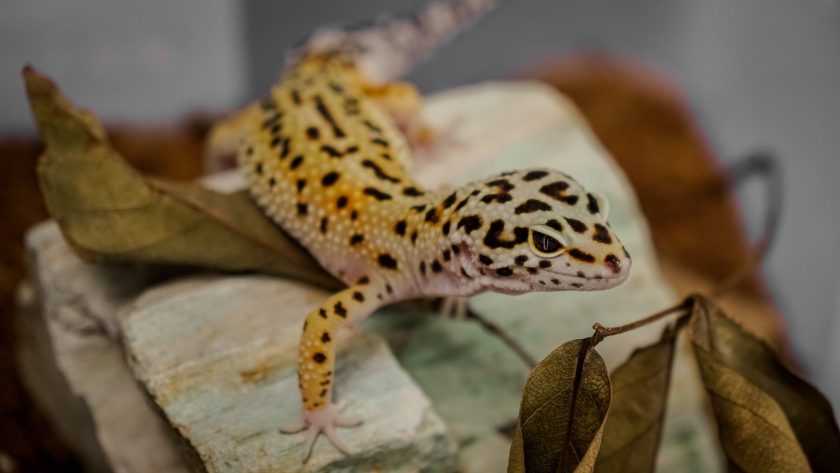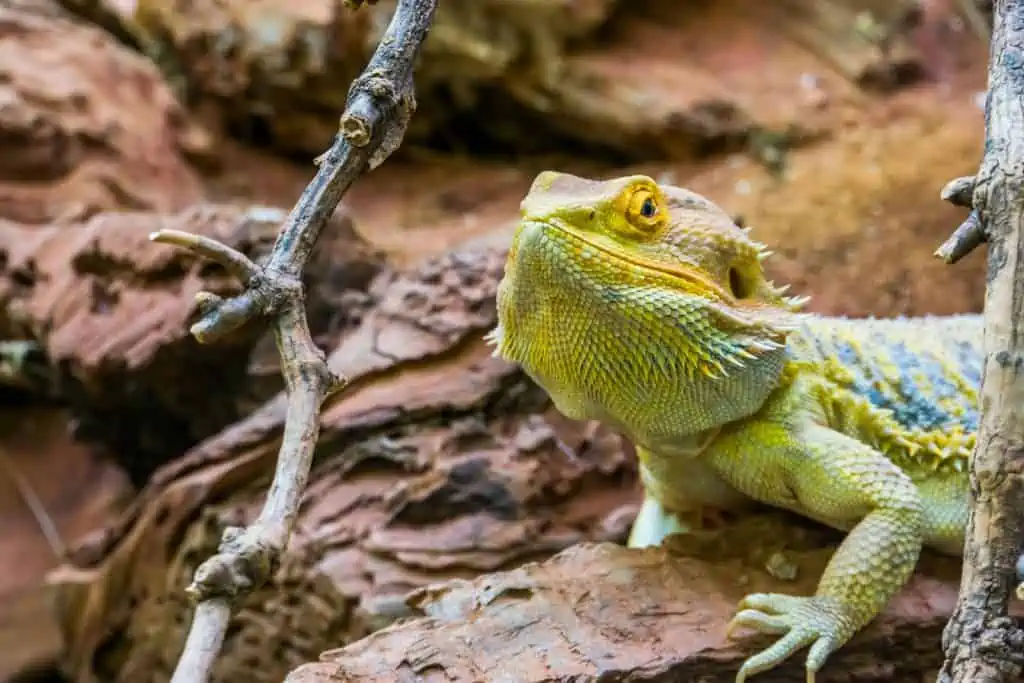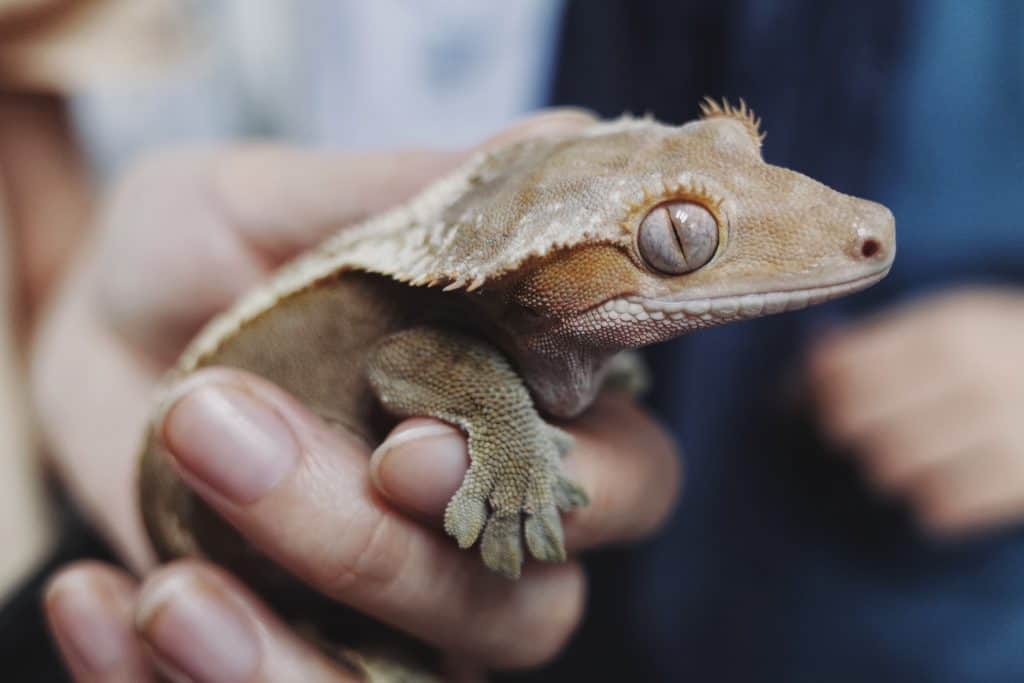When we think of pets for children, our minds often wander to the playful antics of dogs or the gentle purring of cats. However, these traditional choices aren’t always the best fit for every family, especially those with younger members. Enter the world of lizards – a realm where these fascinating creatures can become your child’s gentle friend.
These reptilian companions offer a unique blend of educational interaction and manageable care. These lizards are ideal for youngsters seeking their first pet-owning journey. Other factors that contribute to their suitability for kids include:
- Easy Maintenance
- Minimal Food Requirements
- Allergy-friendly
- Longevity
- Teaches Responsibility
- Builds Confidence
- Independence
This article will discuss the best pet lizards for kids. And reveal why each of these scaly friends might be the perfect addition to your family.
Top Best Pet Lizards for Kids
A wide variety of lizards are available as pets, and some are more suitable for individuals with little or no experience in reptile care, especially kids. Below, I’ve compiled a list of some of the most kids-friendly lizard species.
1. Bearded Dragon
| Characteristic | Detail |
| Scientific Name | Pogona Vitticeps |
| Adult Size | 16 to 24 inches |
| Adult Weight | 300 to 500 grams |
| Lifespan | 8 to 10 years (in captivity) |
| Tank Size | 55+ gallons for adults |
General Description and Appearance: Bearded Dragons stand out with their unique “beard” of spikes under the chin. These lizards have a strong, flattened shape and a large head. Their tail is nearly as long as their body.
Suitability for Kids: These lizards are perfect for beginners in reptile care. It’s because they are easy to look after. They need a well-set tank and proper food, which simplifies their care. Bearded Dragons are curious and friendly. And they like being around people and don’t often get aggressive. This means they don’t bite or scratch much. Their calm nature and enjoyment of being handled make them great for children.
Kids can easily hold them without stressing the lizard or themselves. This creates a strong bond between the pet and the child. The Bearded Dragon’s quiet and mildly active ways fit well with what children can manage.
2. Leopard Gecko
| Characteristic | Detail |
| Scientific Name | Eublepharis macularius |
| Adult Size | 7.1 to 11 inches |
| Adult Weight | 50 to 80 grams |
| Lifespan | Up to 20 years |
| Tank Size | 20 gallons (optimal) |
General Description and Appearance: Leopard Geckos are night-loving desert reptiles. They are known for their spots and gentle behavior. These geckos have a unique look, featuring a wide, flat body and a big, triangular head.
Suitability for Kids: They are easy to take care of. These geckos need a tank that isn’t too big, focusing more on the ground area than height, which makes looking after them simpler. Their calm nature means they rarely bite – making them safe for kids. Handling them is easy due to their peaceful, night-active lifestyle, lowering stress for both the gecko and the child. Leopard Geckos are somewhat lively, making interactions fun yet manageable for kids.
3. Blue-Tongued Skink
| Characteristic | Detail |
| Scientific Name | Tiliqua |
| Adult Size | Up to 23.5 inches |
| Adult Weight | 283-510 grams |
| Lifespan | 15 – 20 years |
| Tank Size | 30-gallon tank (minimum) |
General Description and Appearance: Blue-tongued skinks are special because of their blue tongues. They are strong, land-living reptiles; their heads are wide and triangular, and their skin is smooth and scaly. They come in different patterns and colors.
Suitability for Kids: As they need a moderate level of care. These skinks should have at least a 30-gallon tank. This gives them enough room to move, and their diet is simple, including meat, veggies, insects & fruit. These skinks are usually calm and not aggressive. They don’t bite often – only if they feel scared and this makes them easy to handle and good for forming bonds. Their activity level is not too high, which is good for young pet owners.
4. Crested Gecko
| Characteristic | Detail |
| Scientific Name | Correlophus ciliatus |
| Adult Size | 8 – 10 inches |
| Adult Weight | 42-45 grams |
| Lifespan | 10 -15 years |
| Tank Size | Up to 30 gallons or more |
General Description and Appearance: Crested Geckos are unique for their crests. These crests run from each eye to their tail and look like eyelashes above their eyes. They have heads shaped like wedges and big eyes, and their tails are flat vertically. Their colors range from grey to yellow, often with patterns.
Suitability for Kids: They are curious and watchful but don’t bite much. These lizards live in trees and are active at night. They don’t need a big tank, which makes looking after them easy. And their diet is simple, and they are calm, which is good for kids. They might jump when scared, so handling them carefully is important. They are active at night but calm during the day, making them interesting and easy pets for children.
5. Spiny-Tailed Lizard
| Characteristic | Detail |
| Scientific Name | Uromastyx |
| Adult Size | 10 to 36 inches (varies by species) |
| Adult Weight | Up to 2 kilograms |
| Lifespan | Up to 30 years |
| Tank Size | 40+ gallons tank |
General Description and Appearance: Spiny-tailed Lizards are known for their strong tails, spines, and sturdy bodies. Their colors change, often due to temperature or stress; however, these lizards are usually more colorful in warm weather.
Suitability for Kids: They are easy to take care of and fun to handle. These lizards need a big tank with enough space to move around. And they eat things like greens, seeds, and fruits. Uromastyx lizards are usually calm and don’t often get aggressive or bite. At first, they might need time to get used to being handled, but they become more comfortable. This makes them suitable for children who can be patient. Their activity level is not too high, which fits well with what kids can handle.
6. Green Anole
| Characteristic | Detail |
| Scientific Name | Anolis carolinensis |
| Adult Size | 5-8 inches |
| Adult Weight | 2-6 grams |
| Lifespan | Around 5 years |
| Tank Size | 10-gallon vertical tank (minimum) |
General Description and Appearance: Green Anoles come from parts of the United States. They are thin lizards whose tails comprise half of their total length. Depending on their location, these lizards change colors from brown to green or gray.
Suitability for Kids: Green Anoles are excellent starter pets for kids, often used as class pets in schools. Caring for them is simple; they need a basic setup and diet. This makes it great for young ones to learn about responsibility. Generally, they are easy to get along with, but giving them the right care and attention is important. Their small size and need for a small vertical tank make them easy for children to manage. They are lively and fun to watch. And handling them is not too hard. This makes them a good match for what kids can do.
These lizards offer a good balance. They’re active enough to be interesting but not too hard to take care of, and kids can learn a lot from them. They show how to care for a living creature and are interesting to observe, with their color changes and movements.
7. African Fat-Tailed Gecko
| Characteristic | Detail |
| Scientific Name | Hemitheconyx caudicinctus |
| Adult Size | 3.9-11.8 Inches |
| Adult Weight | 40-65 grams |
| Lifespan | 15–20 years |
| Tank Size | 20 to 36-gallon |
General Description and Appearance: African Fat-Tailed Geckos stand out with their larger heads and bodies. Compared to similar species, they have a different look. Their feet are smaller and more robust. Their colors are usually brown and tan/beige stripes, but sometimes, you might see a white stripe along their back. The underbelly of these geckos is pale pink or off-white.
Suitability for Kids: They live a long time and are easy to get along with. Their housing doesn’t need to be big, making it easier to fit them into a family home. African Fat-Tailed Geckos are usually calm – they don’t bite much, so they’re safe and fun for kids to handle. They are active at night and, rest during the day & eat basic food, so this means they’re easy to watch and take care of, which makes them perfect for young or first-time reptile owners.
What Is the Easiest Pet Lizard To Take Care Of?
In the light of my own experience, Leopard Geckos are the easiest lizards to look after. Taking care of them is really straightforward. They need a home that’s not too big. A 10-20 gallon screened terrarium is ideal; setting this up and keeping it is simple. The temperature in their home should be between 75° to 90°F. And once you get this right, it’s easy to keep it that way. Their food is also simple – they mainly eat live mealworms and crickets. In general, looking after them doesn’t ask for much. This makes them a great choice for people new to pet lizards or for young ones who want a lizard as a pet.
Which Lizard Like To Be Held the Most?
Among all lizards, the Bearded Dragon is the friendliest and loves being held the most. These reptiles really like being around people. And they often seek attention and contact from the people caring for them.
- Unlike many other lizard species, Bearded Dragons exhibit a distinct fondness for being held and petted, responding positively to gentle handling.
- These lizards can build strong and trusting relationships with people. You can tell by how relaxed they are when someone handles them.
Their ability to bond with humans and enjoy physical interaction sets them apart as one of the most handle-friendly lizards in the reptile world.
Why Do Lizards Make Good Pets for Kids?
Lizards are great pets for young ones for several reasons. They teach kids about responsibility and can even provide emotional support. And, here I’ve mentioned the key factors that contribute to their suitability as pets for kids:
Easy Maintenance
Lizards are easier to look after than many other pets, and they don’t need to be walked every day or need a lot of grooming. Just cleaning their home and feeding them is usually enough & this makes them a good pet for families that are often busy.
Minimal Food Requirements
Since lizards are cold-blooded, they don’t need a lot of food – as their metabolism is slower than warm-blooded animals. And this means feeding them is less work than feeding other pets.
Allergy-Friendly
Lizards are a smart choice for families worried about allergies. As they don’t have fur, there’s less risk of allergies. It’s important, though, to choose the right type of bedding for their tank to avoid allergies.
Longevity
Lizards often live a long time, more than 15 to 20 years, so this long life lets kids and families form a deep bond with the pet over many years & it’s different from pets with shorter lives.
Teaches Responsibility
Looking after a lizard helps children learn to be responsible. Simple things like giving them water or preparing their food teach kids how to take care of something.
Builds Confidence
Taking care of a lizard regularly can make a child more confident, such as providing daily water and handling, which can lead to taking on bigger responsibilities.
Independence
Lizards are okay with being alone for a while. They don’t need constant attention. As long as they have their basic needs met, like food and water, they are fine, and this is good for families with a lot of things going on and can’t always be with the pet.
To Sum It Up
Lizards are a surprisingly good choice when searching for the ideal pet for kids. They mix learning with easy care and offer a special kind of friendship, which is different from what typical pets like dogs or cats provide. Lizards introduce kids to the amazing world of nature. And they also teach important life lessons about being:
- Responsible
- Caring
- And understanding.
Each lizard has its personality. They are easy to take care of and don’t cause allergies, making them a great choice for families wanting to bring a pet into their child’s life.
Now, think about these seven lizards. Which one caught your attention the most? Why do you think these lizards are the best first pets for a child? Share your thoughts and stories in the comments.










